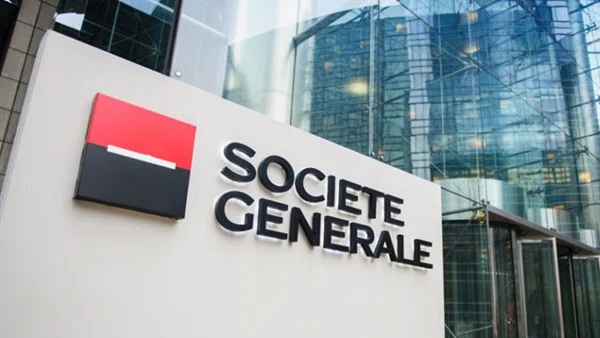At the end of September, the European Commission adopted its Digital Finance Package, a complex set of initiatives aiming to achieve a comprehensive EU regulatory framework for financial services fit for the digital age and alleviating the fragmentation in the Single Market for digital financial services. The package‘s goal is to foster a competitive EU financial sector that gives consumers access to innovative financial products while ensuring consumer protection and financial stability.
This advanced development is based on the extensive work of several institutions in digital financial services. In this context, the developments in the framework of the FinTech Action Plan of 2018 and the work of the European Parliament and of the European Supervisory Authorities (ESAs) should be emphasized. While innovation in finance is not new, investment in technology and the pace of innovation have increased considerably. FinTech solutions using digital identification, mobile applications, blockchain, and distributed ledger technologies are being rolled out. In the financial sector, firms are supervised based on their activities, services, or products, regardless of whether they use traditional or innovative means to deliver those services. Depending on the services and products offered, firms can be regulated under EU or national law, or not be subject to any financial services specific regulation. Accordingly, consultations that consider the consumers´ interests are of particular importance in regulatory work.
Main package‘s provisions and details
The package consists of four cornerstones, including a digital finance strategy, strategy on retail payments, legislative proposals on crypto assets, and legislative proposals on operational resilience.
The Digital Finance Strategy sets out general lines on how the EU can support the finance‘s digital transformation, considering risks regulation. Four main priorities are a common contribution to development: removing fragmentation in the Digital Single Market, adapting the EU regulatory framework to facilitate digital innovation, promoting data-driven finance and addressing the challenges and risks with digital transformation, including enhancing the digital operational resilience of the financial system.
The Retail Payments Strategy aims to further develop the single payments market and to allow the European Union consumers to benefit from digitalization opportunities. The strategy has focused on following implementation ideas: creating the conditions to make the development of instant payments and payment solutions possible; consumer protection; and lessening EU‘s dependency on big players in the FinTech area.
The legislative proposals on crypto-assets differentiate between those crypto-assets already governed by EU legislation and other crypto-assets. For previously unregulated crypto-assets, including “stablecoins”, the Commission presented a draft proposal for a regulation on markets in crypto-assets, which sets strict requirements for issuers of crypto-assets in Europe and crypto-asset service providers wishing to apply for an authorization to provide their services in the single market. Besides, the EU Commission is now going one step further and creating a pilot regime for market infrastructures based on distributed ledger technology. This decision corresponds to the time trend and enables market participants and regulators to gain experience using distributed ledger technology exchanges.
The regulator‘s attention to safety issues is also to be welcomed. Legislative proposals for an EU regulatory framework on digital operational resilience as a part of the Digital Finance Package are a proposal that all participants respect strict standards to prevent and limit the impact of incidents and threats in the field of communication technologies.
Digital Finance Strategy
Fintech solutions have helped broaden and speed up access to loans, including loans supported by the government in response to the Covid-19 crisis. In addition to the four mentioned priorities, the EU Commission will pay attention to digital finance’s new possibilities. A well-functioning Single Market for digital financial services will help improve access to financial services for consumers and retail investors in the EU through more innovative, diverse, and inclusive banking, investment, and insurance services.
In this respect, the implementation considers the possible development for the next three years. By 2024, the EU should implement a sound legal framework to enable the use of interoperable digital identity solutions, enabling new customers to access financial services quickly and easily (“onboarding”). The framework should be based on more harmonized anti-money laundering (AML) and counter-terrorism financing (CTF) rules and a revised framework for electronic identification and trust services for electronic transactions (e-IDAS Regulation). It should enable customer data to be reused subject to informed customer consent, based on full transparency about the consequences and implications of such reuse. In this context, it is vital to assess the requirements of Customer Due Diligence (CDD). As part of the upcoming legislative proposals for a new AML/CTF framework, the European Commission will further define and harmonize CDD requirements to facilitate the use of innovative technologies and allow for seamless cross-border operation, without the need to apply different processes or comply with additional requirements in each Member State.
The purpose of the digital finance strategy is to ensure that the EU regulatory framework for financial services is fit for the new digital age. The further development of the instruments and the regulation for utility tokens and crypto assets are essential in this context. Crypto-assets and their associated blockchains can bring significant opportunities in finance: potentially cheap and fast payments, especially for cross-border and international transactions, new funding possibilities for SMEs, and more efficient capital markets. Utility tokens can serve as enablers of decentralized blockchain networks, and stablecoins can underpin machine-to-machine payments in mobility, energy, and manufacturing sectors.
The gigantic step towards creating the infrastructure for digital finance development is the possibility that it will be established with the pilot regime. The proposal clarifies the application of existing EU rules to crypto-assets, introduces a pilot regime for crypto-assets covered by these rules and establishes a new EU legal framework for crypto-assets that are not covered by these rules, based on a taxonomy of definitions of different types of crypto-assets. The latter includes utility tokens and dedicated regulations to regulate the risks for financial stability and monetary sovereignty linked to asset referenced tokens (also known as “stablecoins”) used for payment purposes.
In a digital context, the Commission intends to ensure that regulated information is provided in electronic machine-readable formats. As regards public disclosure, the Commission wants to ensure that financial information already made available publicly by companies through national registers is considered as high-value data sets in the context of the Open Data Directive. Also, starting with the proposal on crypto assets, the Commission will propose legislative amendments to EU financial services legislation requiring public disclosure to be made systematically available in machine-readable formats. In Capital Markets Union, the Commission will support developing an EU infrastructure and interoperability to facilitate access to all publicly available disclosures.
Retail Payment Strategy
This strategy identifies key priorities and objectives for retail payments in the EU over the four years to come, based on extensive input from all stakeholders and taking in full consideration the outcome of the public consultation.
In the last 3–5 years, most payments innovations have focused on improving customer interfaces like mobile applications or front-end solutions, without fundamentally changing the payment instruments used. Despite the innovative nature and the need to understand the technology behind it, it can be said that the trend has, for the most part, made the functioning of the market more accessible. Innovation and digitalization will continue to change payment mechanisms. Payment service providers will develop new ways to initiate payments, such as “wearables” (watches, glasses, belts, etc.), sometimes even eliminating the need to carry a payment device, building on advanced authentication technologies such as those relying on biometrics. Although it was only now becoming very visible, harmonizing payment systems began with introducing the Single Euro Payment Area (SEPA) and of the equal regulations for payments in the EU internal market.
Based on the analysis of the work already carried out and the consideration of current affairs requirements, the EU Commission developed the vision for better processing of retail payments. This vision comprises three parts of the base: benefits from a broad and diverse range of high-quality payment solutions for EU citizens; development of EU “home” solutions to support the EU’s economic and financial sovereignty; and contribution to improving cross-border payments with non-EU jurisdictions to support the role of “Euro”.
Since the vision, the action plan to strengthen financial independence focuses on the four pillars, whereby these are linked to one another.
The first pillar relates to increasing the reach of payment options and solutions within the pan-European area. Fortunately, the EU Commission regards instant payments as the “new normal.” Instant payments are suitable for many uses, for physical and online purchases, which are currently dominated by payment card schemes. Unfortunately, in August 2020, after nearly three years since its introduction, only 62,4% of all EU payment service providers offering SEPA credit transfers had joined the SEPA Credit Transfer Instant Scheme.
Suppose the first pillar rather defines the principles of further development or the vision of the EU Commission. In that case, the second pillar contains the basic requirement of consumer trust in instant payments as the central building block for the payments´ interoperability. If instant payments are to become the new norm, the Commission considers that it would be appropriate that the charges of both regular and instant credit transfers should be the same. Otherwise, instant payments would remain a niche product, alongside regular credit transfers. On the other hand, the provider can have additional costs if some features and add-ons, such as chargebacks, are offered with instant payments.
The third pillar´s tendency determines the dynamic development of the payments´ interoperability with third countries (as pan-European solution).
The fourth pillar comprises international payments. In the EU, regulation and industry efforts to achieve SEPA have drastically reduced the costs of transferring money over the last decade. However, payments across the EU´s external borders are slower, more costly, opaquer, and more complex. The Commission’s objective is for cross-border payments involving non-EU countries, including remittances, to become faster, more affordable, accessible, transparent, and convenient. It will also encourage greater use of the euro and strengthen its position as a global currency.
The heart of the package – Proposal for a pilot regime for market infrastructures based on DLT
One of the strategy´s identified priority areas is to ensure that the EU financial services regulatory framework is innovation-friendly and does not pose obstacles to applying new technologies.
At this point, the name of the regime “reveals” the background to the regulatory project. Given the innovative nature of the technology, the idea behind the regulatory experimentation is to identify all relevant regulatory obstacles and inform more permanent amendments or guidance.
The proposal is based on Article 114 TFEU, which confers to the European institutions the competence to lay down appropriate provisions for the approximation of laws of the Member States that have their objective to establish and function the internal market. The proposal aims to allow for experimentation through derogations for the use of DLT in the trading and post-trading of crypto assets that qualify as financial instruments, where existing legislation precludes or limits their use.
The proposed regime allows operators to request exemptions from certain regulatory requirements that have previously been identified as obstacles to such development. This proposal seeks to provide legal certainty and flexibility for market participants by establishing uniform requirements for operating a DLT market structure. Permissions granted under this Pilot Regime would allow market participants to perform a DLT market infrastructure and to provide their services across all Member States. In detail, this pilot regime establishes operating conditions for DLT market infrastructures, permissions to use them, and the cooperation of competent authorities and ESMA.
As it was already brought into being in the MiCA proposal, the pilot regime continues the definitions´ tendency. The terms for “DLT market infrastructure”, “DLT multilateral trading are meticulously and considering the technological features facility or DLT MTF”, “DLT securities settlement system and DLT transferable securities” are legally defined.
The pilot regime is very technology and innovation-friendly, based on the basic characteristics, including access and eligibility, permission requirements, facilitating access (as relaxation for exceptional cases), and securities because of the unique consumer protection.
Article 4 sets the requirements for a DLT Multilateral trading facility and specifies the exemptions possible under this regulation. Article 5 establishes the requirements for a Central Securities Depositories (CSDs) operating a securities settlement system, which are the same as for a CSD under Regulation (EU) No 909/2014 and specifies the exemptions possible under this regulation.
Article 4 and Article 5 also contain a limited list of exemptions that DLT market infrastructures can request and the conditions attached to such exemptions.
Applications are to be made to the relevant national authority for the applicant. The national authority must consult with the European Securities and Markets Authority (ESMA) as part of the decision-making process. Permission granted by that authority would allow the DLT market infrastructure to provide their services across the EU.
The regulatory proposal distinguishes between the basic and additional requirements. For example, investment firms and market operators may ask to admit to trading DLT transferable securities that are not recorded in a CSD (by the Central Securities Depositories Regulation) but instead recorded on the DLT MTF’s distributed ledger. This request may be granted by the national authority subject to the DLT MTF meeting some conditions regarding factors such as record-keeping, custody arrangements, and settlement mechanics (including settlement finality). The pilot regime imposes additional requirements on operators to address the novel forms of risk raised using DLT, for example, concerning disclosures, cyber-security, and custody arrangements. The peculiarity of the additional requirements also includes publicity, explaining the project´s critical stuff (Article 6).
The operators of DLT market infrastructures shall provide their members, participants, issuers, and clients with clear and unambiguous information on their website on how they carry out their functions, services, and activities and how this performance of functions, services and activities deviates from an MTF or a securities settlement system. This information shall include the type of DLT used.
Based on the Financial Package objectives (consumer protection), the pilot regime also includes security issues. Transferable securities may be admitted to trading on a DLT MTF and recorded by a CSD operating a DLT SSS:
- shares, the issuer of which has a market capitalization or a tentative capitalization of less than EUR 200 million; or
- convertible bonds, covered bonds, corporate bonds, other public bonds, and other bonds, with an issuance size of less than EUR 500 million (Article 3).
The question arises – what effects will this pilot regime have, and what should happen after the pilot regime? Five years from the entry into application of this regulation, at the latest, ESMA shall present a report to the Commission, whether the pilot regime should be maintained as is or amended (Article 10).
Legislative proposals on operational resilience
In the end, the package includes legislative proposals for an EU regulatory framework on digital operational resilience, aiming to prevent and mitigate cyber threats. These include a proposal for a regulation on digital operational resilience for the financial sector and a proposal for a directive amending Directives in this field.
The absence of detailed and comprehensive rules on digital operational resilience at the EU level has led to national regulatory initiatives´ proliferation. Moreover, the uncoordinated national initiatives have resulted in overlaps, inconsistencies, duplicative requirements, high administrative, and compliance costs, especially for cross-border financial entities. It fragments the single market, undermines the stability and integrity of the EU financial sector.
The Commission proposes that all firms (banks, stock exchanges, clearinghouses, and fintech) respect strict standards to prevent and limit the impact of incidents and threats related to information communication technologies (ICT).
Blockchain technology in the EU – welcome development
These proposals undoubtedly show that further development of blockchain and DLT is welcome in the EU. For the companies and startups that are active in blockchain solutions, it is also good news. In addition to the blockchain strategy and fintech plan, which are more of a general declaratory nature, these proposals create a regulatory framework for the blockchain economy as part of the package.
The creation of the regulatory framework is essential, as the Member States created different standards in the absence of uniform rules. Europe’s regulatory and supervisory frameworks should allow firms operating in the EU Single Market to benefit from financial innovation and provide their customers with the most suitable and accessible products. Such frameworks should also ensure a high level of protection for consumers and investors and ensure the financial system´s resilience and integrity. The benefits of technological innovation were already at the heart of the revisions to the Payment Services Directive and the Directive and Regulation on Markets in Financial Instruments.
The meticulous work of the EU Commission in the elaboration of all parts of the Finance Package shows the particular need to create a “new normality” that corresponds to the trend over time. It is reflected in the visions and the plans for implementing all projects according to Digital Finance Strategy and Retail Payment Strategy in the next three years. Data is becoming a key asset for innovation along with IT infrastructure. Data has become more critical than ever for financial services. The availability of digital data enables a more accurate prediction of future events, thereby allowing for bespoke uses. Analyzing a merged dataset provides more insights than analyzing each dataset separately. The economic benefits derived from a specific dataset are higher when multiple parties have simultaneous access to it. Across the set of priorities, the European Commission will pay particular attention to protect consumers wherever appropriate. Of course, the EU Commission also considers data protection requirements, which has now been established in the EU with the new GDRP.
Creating a pilot regime is a remarkable achievement and a fundamental contribution to facilitating the further development of blockchain solutions across the EU. This proposal is part of a broader framework on crypto-assets and distributed ledger technology (DLT), as it is accompanied by proposals seeking to ensure that existing legislations do not present obstacles to the uptake of new technologies while reaching their objectives as well as a bespoke regime for crypto-assets not covered by existing financial services legislation. The pilot regime represents a so-called ‘sandbox’ approach – or controlled environment – which allows temporary derogations from existing rules so that regulators can gain experience on the use of distributed ledger technology in market infrastructures, while ensuring that they can deal with risks to investor protection, market integrity and financial stability. The intention is to allow companies to test and learn more about how existing rules fare in practice.
Outlook
The aim is to have the three regulations in the Digital Finance Package in full effect by 2024. The Digital Finance and Retail Payments Strategies have been finalized and will be implemented over the next few years.
The takeaway is that the EU is moving towards a blockchain area. It is now also underpinned by the corresponding proposals. It just remains to be seen until the proposal passes through the EU`s ordinary legislative procedure. One point is already certain today – the “new normality” will promote the speed of development of blockchain technology in the EU and guarantee extensive consumer protection without any precedence. Trust in the technology will be established among consumers in the EU.










